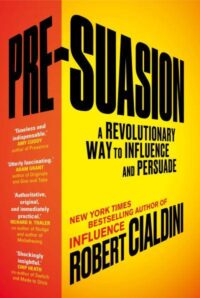Reading Notes for:


Taking a Chance
In the autumn of 1982, someone went into supermarkets and drug stores in the Chicago area, injected packaged capsules of Tylenol with cyanide,
In addition—owing to the rapid, customer-centered steps taken by Tylenol’s maker, Johnson & Johnson, which recalled thirty-one million of the capsules from all stores—it produced a textbook approach to proper corporate crisis management that is still considered the gold standard.
One widely communicated sort of warning alerted consumers to the production lot numbers on the affected bottles—numbers. Because they were the first to be identified, two of the numbers received the most such publicity: lots 2,880 and 1,910.
Immediately, and bewilderingly, US residents of states that ran lotteries began playing those two numbers at unprecedented rates. In three states, Rhode Island, New Hampshire, and Pennsylvania, officials announced that they had to halt wagers on the numbers because betting on them shot above “maximum liability levels.”
Our previous analysis offers one answer: Because of all the publicity surrounding them, they had become focal in attention; and what is focal is seen to have causal properties—to have the ability to make events occur.
Taking a Life
A series of experiments in which observers watched and listened to conversations that had been scripted carefully so that neither discussion partner contributed more than the other. Some observers watched from a perspective that allowed them to see the face of one the parties over the shoulder of the other, while other observers saw both faces from the side, equally. All the observers were then asked to judge who had more influence in the discussion, based on tone, content, and direction. The outcomes were always the same: whomever’s face was more visible was judged to be more causal.
The power of the what’s-focal-is-presumed-causal phenomenon. No matter what they tried, the researchers couldn’t stop observers from presuming that the causal agent in the interaction they’d witnessed was the one whose face was most visible to them.
When her results were first published, that videotaped interactions could produce the what’s-focal-is-presumed-causal effect was not viewed as an important facet of Taylor’s findings. But circumstances have now changed, because certain kinds of videotaped interactions are used frequently to help determine the guilt or innocence of suspects in major crimes.
All interrogations involving major crimes be videotaped. That way, these commentators have argued, people who see the recordings—prosecutors, jury members, judges—can assess for themselves whether the confession was gained improperly. It’s a good idea in theory, but there’s a problem with it in practice: the point of view of the video camera is almost always behind the interrogator and onto the face of the suspect.
The legal issue of whether a confession had been made freely by the suspect or extracted improperly by an interrogator involves a judgment of causality — of who was responsible for the incriminating statement. As we know from the experiments of Professor Taylor, a camera angle arranged to record the face of one discussant over the shoulder of another biases that critical judgment toward the more visually salient of the two. We also know now—from the more recent experiments of social psychologist Daniel Lassiter—that such a camera angle aimed at a suspect during an interrogation leads observers of the recording to assign the suspect greater responsibility for a confession (and greater guilt).
The bias disappeared when the recording showed the interrogation and confession from the side, so that the suspect and questioner were equally focal. In fact, it was possible to reverse the bias by showing observers a recording of the identical interaction with the camera trained over the suspect’s shoulder onto the interrogator’s face; then, compared with the side-view judgments, the interrogator was perceived to have coerced the confession. Manifestly here, what’s focal seems causal.
Is there anything you could do to increase the odds that, should you be somehow tricked or pressured into making falsely incriminating comments, external observers would be able to identify the tricks and pressure as the causes?
There is. It comes in two steps, straight from the research of Professors Taylor and Lassiter.
First, find the camera in the room, which will usually be above and behind the police officer. Second, move your chair. Position yourself so that the recording of the session will depict your face and your questioner’s face equally. Don’t allow the what’s-focal-is-presumed-causal effect to disadvantage you at trial.
Evidence that people automatically view what’s focal as causal helps me to understand other phenomena that are difficult to explain. Leaders, for example, are accorded a much larger causal position than they typically deserve in the success or failure of the teams, groups, and organizations they head. Business performance analysts have termed this tendency “the romance of leadership” and have demonstrated that other factors (such as workforce quality, existing internal business systems, and market conditions) have a greater impact on corporate profits than CEO actions do; yet the leader is assigned outsize responsibility for company results.
In sum, because what’s salient is deemed important and what’s focal is deemed causal, a communicator who ushers audience members’ attention to selected facets of a message reaps a significant persuasive advantage: recipients’ receptivity to considering those facets prior to actually considering them. In a real sense, then, channeled attention can make recipients more open to a message pre-suasively, before they process it. It’s a persuader’s dream, because very often the biggest challenge for a communicator is not in providing a meritorious case but in convincing recipients to devote their limited time and energy to considering its merits. Perceptions of issue importance and causality meet this challenge exquisitely.
